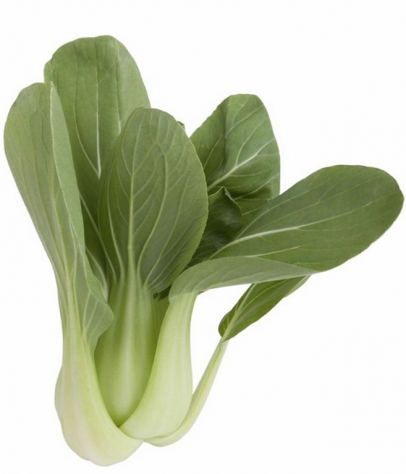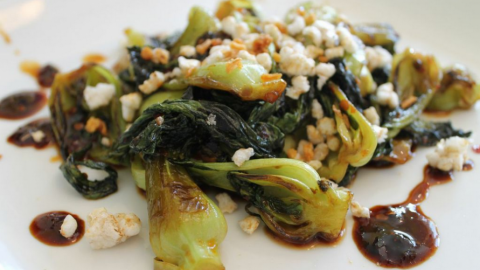Bok Choy, Demystifying the Chinese Cabbage
Bok choy (BAHK-choy) is shrouded in mystery. To most, this cabbage presents a paradox: It is a 6,000-year-old crop that has staggering contemporary appeal. It is a super food that somehow tastes super good, and it is a Chinese staple that has become commonplace at farmers’ markets and in grocery stores across the U.S.
With all these mixed signals, bok choy can easily confound newcomers to the world of leafy greens. Indeed, this ancient Chinese cabbage makes kale look like a safe, straightforward choice.
Chang Xiong from Pak Express farm in Cranston has encountered her share of skeptics. When she first moved to the U.S. from Laos, she grew traditional Laotian greens. But shoppers at farmers’ markets weren’t biting. So Chang conceded and started growing more familiar crops. Still, she hasn’t given up on bok choy. And Rhode Islanders are starting to come around.
Its name means “white vegetable,” because of its bright white, crunchy stalks, which are topped off with spinach-like dark green leaves. Apart from their astounding natural beauty, bok choy’s stalks and leaves are exceptionally nutrient-dense. They are jam-packed with vitamins A, C, K, folate and calcium as well as antioxidants. Plus, as a member of the cruciferous vegetable family (along with broccoli, cabbage and cauliflower), bok choy is rich in anti-cancer compounds.
Chang is well aware of its beneficial properties: She recommends bok choy soup for ailments ranging from fatigue to backaches.
“It is very healthy,” she says. “Everyone should eat their greens.”
Despite its mystique, buying bok choy shouldn’t be intimidating. Look for firm, smooth stalks and crisp greens. It can be stored in a plastic bag in the fridge for up to five days. For first-timers, baby bok choy (also called Shanghai bok choy) can serve as a good introduction. It is smaller, tenderer and sweeter than the larger variety.
This enigmatic veggie is surprisingly versatile. Chang recommends sautéing it with fresh ginger after rinsing and patting dry. It is sweet and refreshingly crisp so can also be eaten raw, in juices or in stir-fries, stews or lightly steamed on its own. No matter how ubiquitous bok choy becomes, though, it will always add a little thrill to any dish.
The Recipe: Hot and Sour Bok Choy










